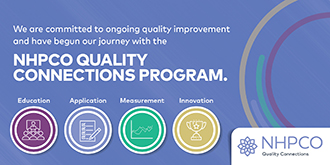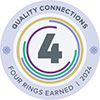Claremont resident offers holistic approach to medicine: an interview with VNA’s medical director Dr. Dauwalder.
Mick Rhodes mickrhodes@claremont-courier.com
Myriad factors come into play when a loved one is near the end of their life. Moral, med-ical, religious and monetary decisions are often thrust upon patients and families in their most intimate and fraught moments. Death can be quick, beautiful, heartbreaking, messy, loud, protracted, exhilarating, harrowing or idyllic. Sometimes it’s all these things, or something else altogether. rt is, however, the one place at which we will all ar-rive. You’d think that by now we would have figured out an elegant way to get there. But the truth is the dignified or even pain-free end is simply not in the cards for everyone.
It’s Claremont resident Dr. Timothy Dauwalder’s job to help right this wrong. The Executive Medical Director for VNA Hospice and Palliative Care of Southern California, Dr. Dauwalder was among the first group to be certified as a board specialty palliative and hospice care doctor when he received his medical degree from the College of Osteopathic Medicine of the Pacific in 2000. “When I started, it was a few thousand, and now there’s forty or fifty thousand,” he said. “It’s a big movement now.” The doctor has by now helped hundreds of patients go out with a greater dignity. “It was just something that I was drawn to, just by observing my world,” he said. “And I ended up finding out that practicing with the tenets r found in place in palliative care fit with the foundation of compassion and the tools of science: objective, thoughtful approaches that are sound. But again [the question of] has that foundation in compassion, and what does it mean to the person’s quality of life and to this construct of suffering.”
Broadly, palliative medicine helps patients be more comfortable through the reduction of pain and suffering associated with disease. Hospice care is for end-of-life patients and involves helping them and their families be as comfortable as possible as the disease runs its course. Ideally, hospice care occurs in the patient’s home. It’s a field of specialization that was only fully legitimized in this country about 20 years ago. It has its origins in England, where Dame Cicely Saunders coined the phrase and went on to create the first modern hospice, St. Christopher’s Hospice, in a residential suburb of London in 1948. In 1963 Ms. Saunders was invited to lecture to medical students at Yale University, setting in motion the chain of events that eventually brought the new concept of care for the dying to the US.
Dr. Dauwalder didn’t start out to be a hospice and palliative care doctor. In his early residency doing more traditional internal rounds, Dr. Dauwalder noticed that treatment plans would scientifically, and effectively, diagnose and treat a disease. But he longed for a more dynamic treatment plan.
“What I noticed in this process of treatment that was technically appropriate and scientifically sound was that people didn’t always look better or feel better,” he said. “The diagnosis treatment plan really didn’t address suffering. So if I looked at it very objectively I would say that we and I and the system helped many, many people. But when I looked at them humanistically, and I started recognizing the suffering that was in front of me, it became a bit overwhelming.”
That suffering is at the core of what hospice and palliative care seeks to ease. It’s a holistic approach, comparatively speaking, when one thinks of how family medicine has been practiced in this country for time immemorial. Commonly, disease is treated as a stand-alone, and the goal is to cure, regardless of whether or not that cure causes even more suffering. Think chemotherapy, where oftentimes patients gain an extra six months of life, but swallowing all that poison means those six months are low-quality. The expectation of patients undergoing hospice and palliative care is that they will suffer less, not that they will be cured. It is possible that hospice and palliative care is the purest distillation of the Hippocratic Oath: “Do No Harm.”
I agree with that,” Dr. Dauwalder said. “And the thing that’s challenging psychologically for physicians is they often live under a false construct-and we’re taught it-that we can control, we can adjust and we can cure all that is laid in front of us, and that is simply false. And if you work under that premise, your actions can be the source of suffering, because it doesn’t acknowledge the reality that we don’t, and that we can’t, and that aging and death are inevitable, and there comes a time when we have to adjust to organs that don’t work.”
If time is the great goal of traditional treatment, quality time is the reward for Dr. Dauwalder’s patients. “A day is more relevant and important when you have a year to live, than when you’re 30,” he explained. “It’s a greater component of your life. If you take that day of suffering, that is a huge portion of your life remaining. And it is not acceptable to me that we would not be anything other than understanding and compassionate to make that day the best we can.”
Still, one would naturally think it must be excruciating to see all your patients die. After all, the goal of a traditional doctor is to keep patients alive at all costs.
“But that’s the beautiful part,” Dr. Dauwalder said. “I could avoid feeling and miss it. There are times when I have to take a moment to have my feelings, and then I get back to what I do with boundaries that I think are safe and strong and sustainable for me. But I don’t find that there’s a limitation for my capacity to love people. Every day is a new day to care for somebody. And it only gets better. It is hard, but people are the most genuine, and all of our prejudices are just irrelevant. It’s a beautiful place.”




